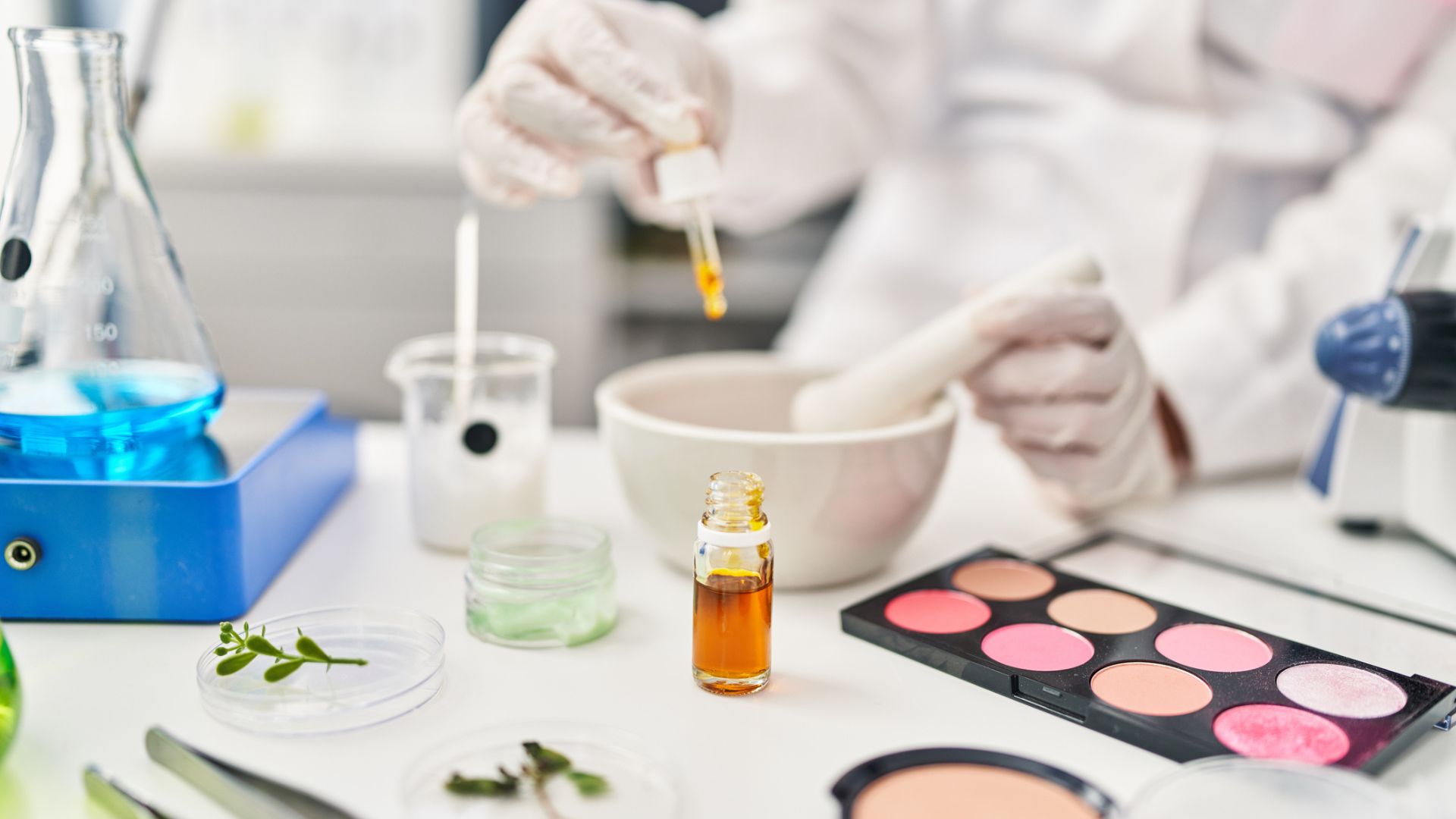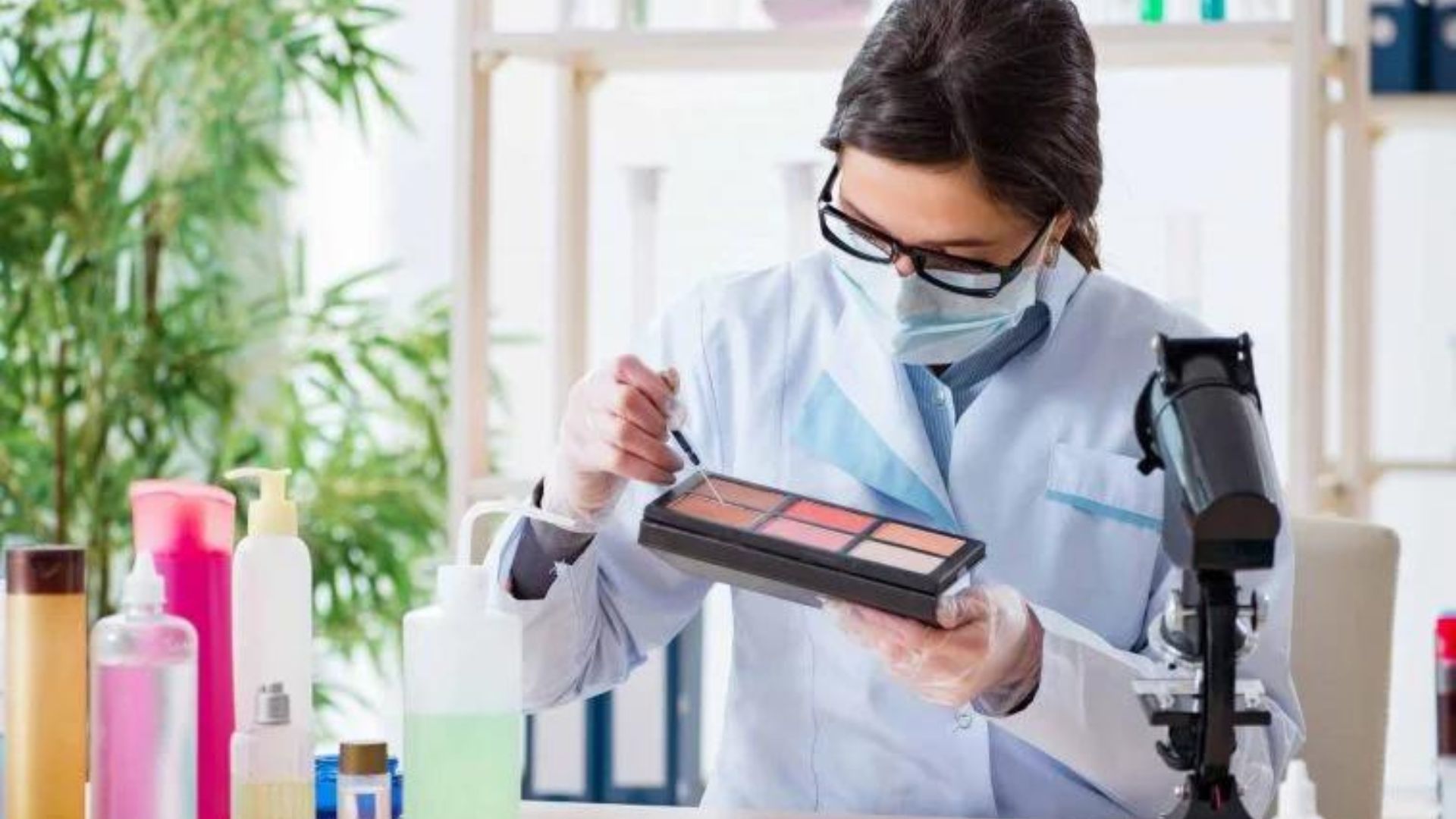Cosmetics have been an integral part of human culture for centuries, enhancing beauty and personal care. The chemistry behind cosmetics involves a fascinating blend of ingredients and reactions that create the products we use daily. In this article, we’ll delve into the key ingredients in cosmetics and the chemical reactions that contribute to their effectiveness.

Cosmetics Chemistry: Ingredients and Reactions
Key Ingredients in Cosmetics
Water: The Universal Solvent
- Role in Cosmetics: Water is the most common ingredient in cosmetics, serving as a solvent to dissolve other ingredients and providing a medium for their application.
- Types: Distilled water, purified water, and mineral water are commonly used, each offering different benefits for skin hydration and product stability.
Emollients: Softening and Smoothing Agents
- Function: Emollients, such as oils and fats, are used to soften and smooth the skin, providing a moisturizing effect.
- Common Examples: Ingredients like shea butter, coconut oil, and mineral oil are popular emollients in skincare and makeup products.
Emulsifiers: Blending Oil and Water
- Purpose: Emulsifiers are critical in cosmetics that contain both oil and water, helping to blend these normally immiscible components into a stable mixture.
- Types: Common emulsifiers include lecithin, polysorbates, and cetyl alcohol, which ensure a smooth and consistent texture in lotions and creams.
Preservatives: Ensuring Product Safety
- Necessity: Preservatives are added to cosmetics to prevent the growth of harmful bacteria and fungi, ensuring the product’s safety and longevity.
- Examples: Parabens, phenoxyethanol, and benzoic acid are widely used preservatives that protect against microbial contamination.
Chemical Reactions in Cosmetics
Saponification: The Foundation of Soaps
- Process: Saponification is a chemical reaction that occurs when fats or oils react with an alkali, producing soap and glycerin.
- Application: This reaction is the basis for many cleansing products, including traditional soaps and liquid body washes.
Emulsification: Creating Stable Mixtures
- Mechanism: Emulsification involves the dispersal of one liquid into another with which it does not naturally mix, stabilized by emulsifiers.
- Importance: This reaction is crucial for products like creams, lotions, and moisturizers, providing a uniform texture and effective application.
Oxidation and Reduction: Active Ingredients in Action
- Antioxidants: Ingredients like vitamin C and tocopherol (vitamin E) act as antioxidants, preventing the oxidation of other ingredients and protecting the skin from free radicals.
- Oxidation Reactions: These reactions can also be involved in the coloration of products, such as the development of color in hair dyes.
Hydrolysis: Breaking Down Complex Molecules
- Role in Exfoliation: Enzymatic hydrolysis is used in exfoliating products to break down dead skin cells, promoting cell renewal and a smoother skin texture.
- Common Enzymes: Papain from papaya and bromelain from pineapple are examples of enzymes used for their exfoliating properties.
Safety and Regulation in Cosmetics Chemistry
Ingredient Safety
- Regulatory Bodies: Organizations like the FDA in the United States and the European Medicines Agency regulate the safety of cosmetic ingredients.
- Safety Assessments: Ingredients undergo rigorous testing for potential irritants, allergens, and toxicological effects before being approved for use in cosmetics.
Consumer Awareness
- Label Reading: Understanding cosmetic labels and ingredient lists can help consumers make informed choices about the products they use.
- Trends: The demand for natural and organic cosmetics has increased, driven by consumer interest in safer and environmentally friendly ingredients.
Conclusion
The chemistry of cosmetics is a complex and fascinating field that blends art and science. From the formulation of simple creams to advanced anti-aging serums, understanding the ingredients and reactions involved can enhance our appreciation of these everyday products. As consumers become more informed, the cosmetic industry continues to innovate, offering products that are not only effective but also safe and sustainable.




